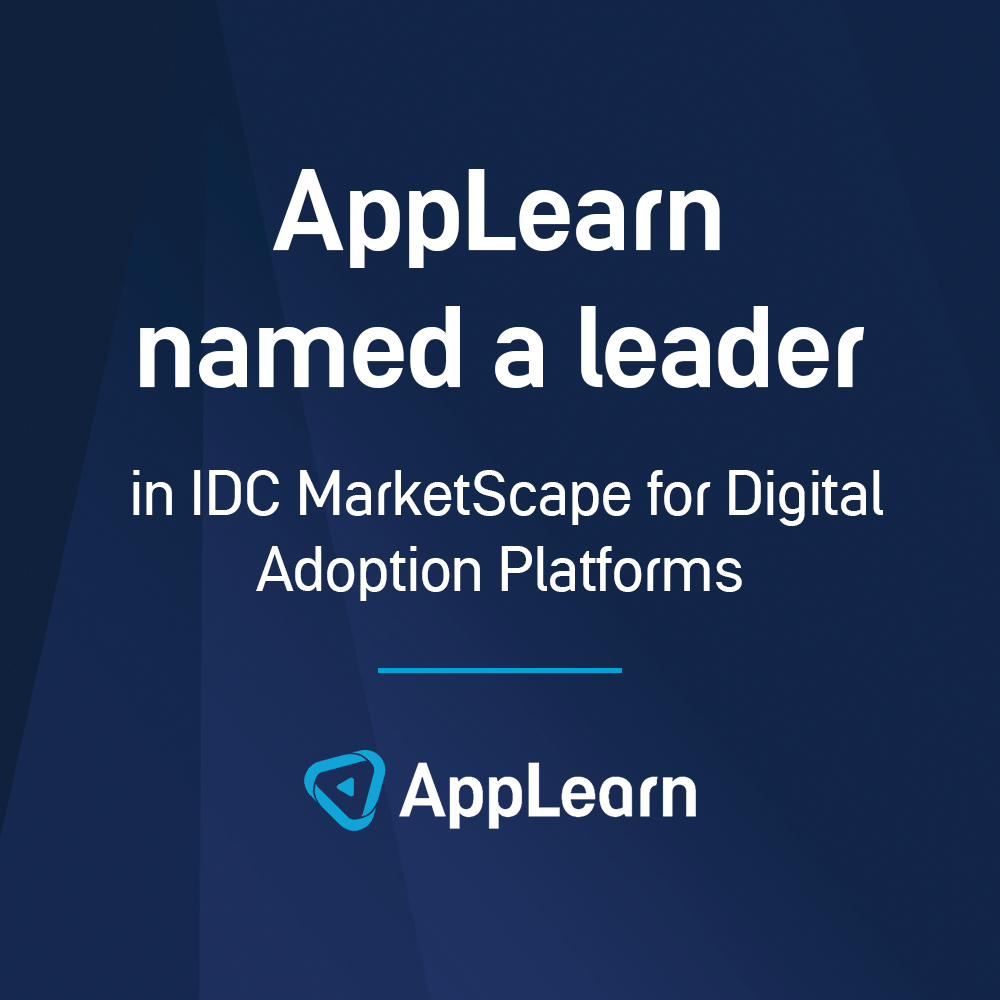News
Driving better decisions through data analytics
Driving better decisions through data analytics
Data analytics, the process of extracting information from data and turning it into valuable insight, can help businesses make better decisions and improve their performance. It sounds simple enough, but data can be an elusive and uncooperative beast.
Although every organization, from local retailers to multinational conglomerates, possess data, finding it, making sense of it, and then transforming it into a resource that can be used to drive meaningful decision-making is every bit the challenge it sounds.
In this piece, we discuss all things data. We look at how it can be mined and delivered back into your business intelligently to the ways a digital adoption platform (DAP) contextualizes your data to unlock insights that can be used to improve the digital employee experience (DEX).
Mining data and delivering it back to your business intelligently
In a world so reliant on data that it’s even referred to as ‘the new oil’, mining and harnessing it has become a crucial corporate undertaking. Using advanced analytics and machine learning, businesses extract, process, and transform their data into actionable insights, empowering decision-makers to make informed choices and drive growth.
The process of data mining involves the use of various techniques and algorithms to explore large datasets so that patterns, trends, and correlations can be discovered. From here, businesses can uncover valuable intelligence hidden within their data that help to identify customer preferences, market trends, operational inefficiencies, and other factors that impact performance.
However, mining data is only part of the battle. Delivering insights in a way that is understandable and actionable is equally vital. Few people enjoy looking at or are inspired by spreadsheets and so intelligent delivery mechanisms, such as dashboards and visualizations, are used to present information in a way that is accessible and meaningful. Quite apart from being more agreeable to look at, presenting data in this way ensures that decision-makers can easily interpret and act upon these data-derived insights.
Yet, intelligent data delivery goes beyond retrieving and re-packaging raw information. It’s a process that involves contextualizing insights, tailoring them to specific business needs, and enabling real-time or near-real-time access. By going further and leveraging technologies like artificial intelligence, businesses can automate the data delivery processes to enable even faster and more proactive decision-making.
By integrating the two practices of data mining and intelligent delivery into business processes, another often unexpected yet wholly positive outcome emerges. A data-driven culture is soon embedded. Where data sits at the heart of operations, organizations are empowered to make data-backed decisions, optimize operations, enhance customer experiences, and identify new opportunities.
Acting on the data you've unlocked
It's important to emphasize that data alone won’t drive improvement. What’s needed is for relevant measures and metrics to be established to highlight successes, flag areas for improvement, and expose opportunities. For this, you need ‘adoption data’.
Put simply, adoption data is any information pertaining to user interactions within software applications. From logins and time spent in applications, to how users move between applications, adoption data provides information on what users have done within different software, how long various tasks have taken, and what overall outcomes have been.
As most business operations depend on a variety of software technologies, the potential adoption data has to drive improvements is formidable. With enough collected, you soon see where training might be required, how applications can be optimized, whether certain applications are even needed, and where new technology investments might be necessary. In other words, you can start acting on your data.
When adoption and usage data is used to inform digital workplace strategies, we’ve seen support be over 8x more effective in terms of user engagement and impact, when compared to other methods that can be used to determine where support content is needed.
The role of the digital adoption platform in data analytics
For the uninitiated, a DAP provides an end-to-end solution for driving change and influencing behavior through technology. It provides a central hub for all your digital content (including enterprise applications, internal intranets, knowledge bases, and support portals), enabling employees to find what they need quickly and easily, thereby improving the overall DEX.
With an integrated approach to managing change initiatives across multiple channels—from email drops to mobile app updates—every employee sees the same message at the same time in their preferred channel of communication. It all makes for a potent piece of software, more so because it allows you to access and apply adoption data so that the true value of your software investments can be tracked and demonstrated through comprehensive data analytics.
Without these DAP-delivered analytics, the success of corporate software is typically evaluated based on general usage figures supplied by software vendors or anecdotal user feedback. Handy though both can be, you are right to expect more from expensive technology investments that can take months to implement properly.
No business invests in software based on attractive features or functionality; businesses invest in software to achieve time and cost savings. Adoption data, provided by a DAP, enables you to measure not just the inputs of your software but the outcomes as well.
DAPs for driving change, influencing behavior and boosting technology ROI
Earlier, we alluded to the data-driven culture that can be embedded by integrating data mining and intelligent data analytics delivery into business processes. When coupled with a DAP that tracks all elements of application usage and provides users with simple prompts directing them to relevant support channels, the DEX is supercharged. More so, when a DAP’s powerful machine learning and analytics capabilities are used to pre-empt adoption challenges and deploy the relevant support before issues occur.
As DAPs can be configured to sit in 'listening mode', other elements of application usage can also be tracked, such as time spent dwelling on application functions and the accurate detection of confused behavior. The resultant data allows not only the DAP to see where your users need support, but allows you to see it too. Therefore, rather than pop-ups and product tours constantly appearing and potentially interfering with workflows, support can be placed exactly when and where users actually need it.
Through use of a DAP, a global mining customer was able to spot 1000 opportunities hours in a basic ‘find employee’ process within SuccessFactors. Employees were struggling to complete the process efficiently due to poor UI and wasting time. Through the deployment of in-app guidance, the issue, which the customer was unaware of, was fixed; giving back time to the employees and significantly reducing frustration.
Accordingly, the overall effect of a DAP transcends maximized potential of technology investments and better business insights, it contributes to significant DEX improvements. Indeed, DAPs are emerging as the most effective key for unlocking DEX success.
Ultimately, this is what DAPs are all about. As businesses continue to introduce new applications to their technology estates, employees are left to grapple with what are often unintuitive user experiences. Forced to spend time and effort searching for support or navigating to tasks when issues arise, employee frustration intensifies. DAPs remove this frustration and claw back the time lost to searching for guidance and different functionalities by providing employees with universal in-app support options. As an example, one customer was able to identify that the ‘objective setting’ process within a well-known HR application was a sticking point for their users. By implementing in-app support and guiding users through this process, the average task duration decreased from 3 mins to 1 min over a 6-month period. This represented a saving over 200 hours on a single process.
Happier, more productive workers who achieve competence with different technologies in record time. Hours wasted navigating through various features and requesting help returned. Rich, real-time and actionable data analytics provided. Together, these benefits translate to one overarching draw for organizations that’s impossible to ignore: maximized return on technology investments. And, with decision-making augmented by access to these real-time and actionable data analytics, you can plot a course to growth with greater accuracy, reliability, and speed.
Article by
Adam McVey
Share this article





